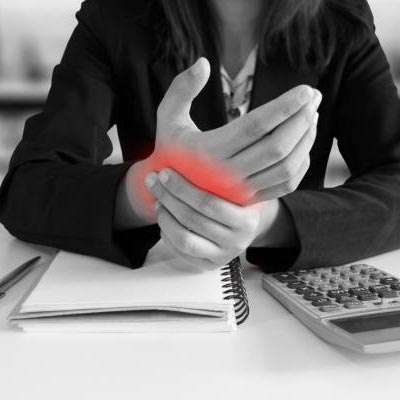Acute and emergency pain management is a critical aspect of healthcare, aimed at providing prompt relief and improving the quality of life for patients experiencing acute pain due to various medical conditions or injuries. As a general physician, understanding the medical terminology, goals, strategies, and types of treatments for acute and emergency pain management is essential for effectively addressing patients' pain needs. In this article, we will explore the key concepts surrounding acute and emergency pain management, including its goals, strategies, and types of treatments available.
What are the Goals ?
The primary goals of acute and emergency pain management are to
- Alleviate Pain: Provide prompt and effective relief from acute pain to enhance patient comfort and improve overall well-being.
- Prevent Progression: Prevent the exacerbation or progression of acute pain, which can lead to increased suffering and potential complications
- Improve Function: Restore or maintain functional abilities, enabling patients to perform activities of daily living and participate in essential tasks.
- Minimize Adverse Effects: Minimize the risk of adverse effects associated with pain management interventions, including medication side effects and procedural complications.
- Address Underlying Causes: Identify and address the underlying causes of acute pain, such as injuries, medical conditions, or surgical procedures, to optimize treatment outcomes.

Strategies for Acute and Emergency Pain Management
Several strategies may be employed to achieve the goals of acute and emergency pain management:
- Comprehensive Assessment: Conduct a thorough assessment of the patient's pain, including its location, intensity, quality, duration, exacerbating and alleviating factors, and impact on daily activities.
- Multimodal Approach: Employ a multimodal approach to pain management, combining pharmacological and non-pharmacological interventions to maximize pain relief while minimizing side effects.
- Individualized Treatment Plans: Develop individualized treatment plans tailored to each patient's unique needs, preferences, and medical history.
- Timely Intervention: Provide timely and appropriate interventions to address acute pain promptly, prevent its escalation, and optimize treatment outcomes.
- Patient Education: Educate patients and caregivers about pain management strategies, including the use of medications, non-pharmacological techniques, and self-care measures.
- Interdisciplinary Collaboration: Collaborate with interdisciplinary healthcare team members, including pain specialists, nurses, physical therapists, and psychologists, to optimize pain management outcomes.
- Continuous Monitoring: Monitor patients' pain levels, treatment responses, and adverse effects regularly, adjusting treatment plans as needed to achieve optimal pain control.
Types of Treatments for Acute and Emergency Pain Management
Pharmacological Interventionss
- Analgesics: Non-opioid analgesics such as acetaminophen and nonsteroidal anti-inflammatory drugs (NSAIDs) can be used to relieve mild to moderate acute pain.
- Opioids: Opioid medications, such as morphine, oxycodone, and hydromorphone, may be prescribed for severe acute pain or pain unresponsive to non-opioid analgesics.
- Adjuvant Medications: Adjuvant medications, including antidepressants, anticonvulsants, and muscle relaxants, may be used in conjunction with analgesics to enhance pain relief or manage specific pain syndromes.
Non-Pharmacological Interventions
- Physical Therapy: Physical therapy techniques, including exercise, manual therapy, and modalities such as heat, cold, and electrical stimulation, can help reduce pain and improve function.
- Cognitive-Behavioral Therapy (CBT): CBT techniques, such as relaxation training, guided imagery, and cognitive restructuring, can help patients manage pain perception and cope with psychological distress.
- Acupuncture: Acupuncture involves the insertion of thin needles into specific acupuncture points to stimulate the body's natural pain-relieving mechanisms and promote pain relief.
- Massage Therapy: Massage therapy techniques, including Swedish massage, deep tissue massage, and myofascial release, can help reduce muscle tension, improve circulation, and alleviate pain.
Procedural Interventions
- Nerve Blocks: Local anesthetics or steroids can be injected into specific nerve or tissue areas to block pain signals and provide targeted pain relief.
- Joint Injections: Intra-articular injections of corticosteroids or hyaluronic acid can be administered to reduce inflammation and alleviate pain in joints affected by arthritis or other conditions.
- Trigger Point Injections: Trigger point injections involve the injection of local anesthetics or botulinum toxin into trigger points (taut bands of muscle) to relieve muscle pain and spasm.
- Regional Anesthesia: Regional anesthesia techniques, such as epidural or spinal anesthesia, can be used to numb specific regions of the body and provide pain relief during surgical procedures or childbirth.
acute and emergency pain management is a vital aspect of healthcare aimed at relieving pain, improving function, and enhancing patients' quality of life. By employing a multimodal approach to pain management and utilizing a variety of pharmacological, non-pharmacological, and procedural interventions, general physicians can effectively address acute pain in diverse patient populations. With a thorough understanding of the goals, strategies, and types of treatments available for acute and emergency pain management, healthcare providers can optimize pain relief outcomes and promote patient well-being.
